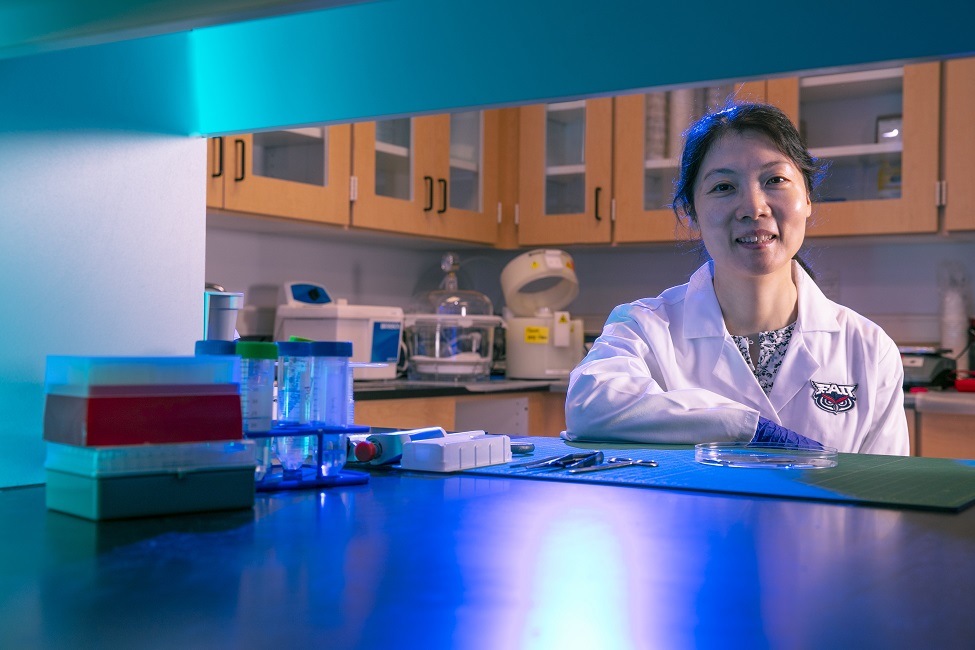TOOL TO DIAGNOSE AND MONITOR SICKLE CELL DISEASE RECEIVES U.S. PATENT
by GISELE GALOUSTIAN | Thursday, Jun 22, 2023
In the United States, sickle cell disease affects about 100,000 people and about 2 million Americans carry this genetic mutation. The most common and serious problems caused by sickle cell disease are anemia, pain and organ failure – stroke affects about 10 out of 100 children who have this disease. The national median life expectancy for people who have sickle cell disease can reach up to age 50.
This inherited, lifelong blood disorder is characterized by rigid and sickle-shaped red blood cells due to a dramatic change in their morphology. They stick to blood vessels, blocking blood flow. Patients with sickle cell disease suffer from unpredictable and painful events when sickled red blood cells block blood flow to the point that tissues become deprived of oxygen.
The main goal of managing sickle cell disease is preventing these acute, painful crises. To do so requires diagnostic and monitoring tools under a physician’s supervision. However, current tools are bulky, expensive and require technical training. Moreover, the gold standards used to monitor and diagnose sickle cell disease rely primarily on genetic tests and optical microscopy of sickle-shaped red blood cells, which are time-consuming, cause delays and do not capture changes in real time.
There are no commercial tools available today to continuously monitor sickle cell disease and no portable field sensor to quantitatively measure and monitor cell sickling events using small blood samples. This leaves patients, diagnosed or not, at risk. Furthermore, because morphological changes due to repeated cell sickling events may lead to permanent cell damage, time is of the essence.
Using microfluidics, flow cytometry and electrical impedance, Sarah Du, Ph.D., an associate professor in Florida Atlantic University’s Department of Ocean and Mechanical Engineering within the College of Engineering and Computer Science, recently received a patent from the United States Patent and Trademark Office for a novel invention that will offer patients a better way to manage their disease.
The device developed by Du rapidly and reliably monitors sickle cell disease continuously using a microfluidics-based electrical impedance sensor, which can characterize the rate of cell sickling and the percentage of sickled cells. It can distinguish the dynamic cell sickling and unsickling processes in sickle blood without the use of microscopic imaging or biochemical markers.
Assisted with a computer application developed for the device, users can perform impedance scans over designated lengths of time, graph the measured magnitude and phase of the impedance measured, and share the raw data directly from a smartphone. The portable device, which weighs about 1 pound, can be handheld and is easy to operate.
“There are many advantages to using this device such as portability and affordability,” said Du. “Importantly, this device will provide users with measurements to diagnose their sickle cell disease severity and compare normal versus diseased sickle cell red blood cell samples. These longitudinal measurements will only require an extremely low sample of blood such as from a finger stick to allow patients to monitor their disease.”
Cytometry measures cells and other biological particles while flow cytometry incorporates the cells or particles moving in a single file in a fluid stream. Flow cytometry can measure cell size, cell shape and the quantity of cells in any given volume. Impedance based flow cytometry is capable of providing information regarding individual particles by measuring changes in the impedance values created by particles passing through measurement electrodes.
However, the equipment currently used to perform these measurements is costly and cumbersome. Du’s invention provides an alternative for patients and health care providers.
“With the portable impedance-based flow cytometer, it’s possible to quantify the number of cells that pass through the electrodes and to measure the electrical impedance of single cells,” said Du. “Sickle cells show differences in impedance compared to healthy cells. These differences are quantified based on the different phases of the cells. That’s why it’s possible to differentiate sickle cells from normal cells as well as differences between patient conditions using this portable cytometer.”
In a prior study, Du characterized the rate of cell sickling and the percentage of sickled cells, which are important contributing factors of abnormal blood flow and sickle cell vaso-occlusion, which is what causes acute pain in patients due to altered forms of hemoglobin.
“The combination of electrical impedance measurements and microfluidics provides a promising method to rapidly assess the dynamic processes of cell sickling and unsickling in patients with sickle cell disease," said Stella Batalama, Ph.D., dean, FAU College of Engineering and Computer Science. “Professor Du’s cutting-edge technology, which has received an important U.S. patent, will provide patients with sickle cell disease opportunities to reliably and conveniently monitor their disease in the same way patients with diabetes can monitor their disease using a glucometer.”